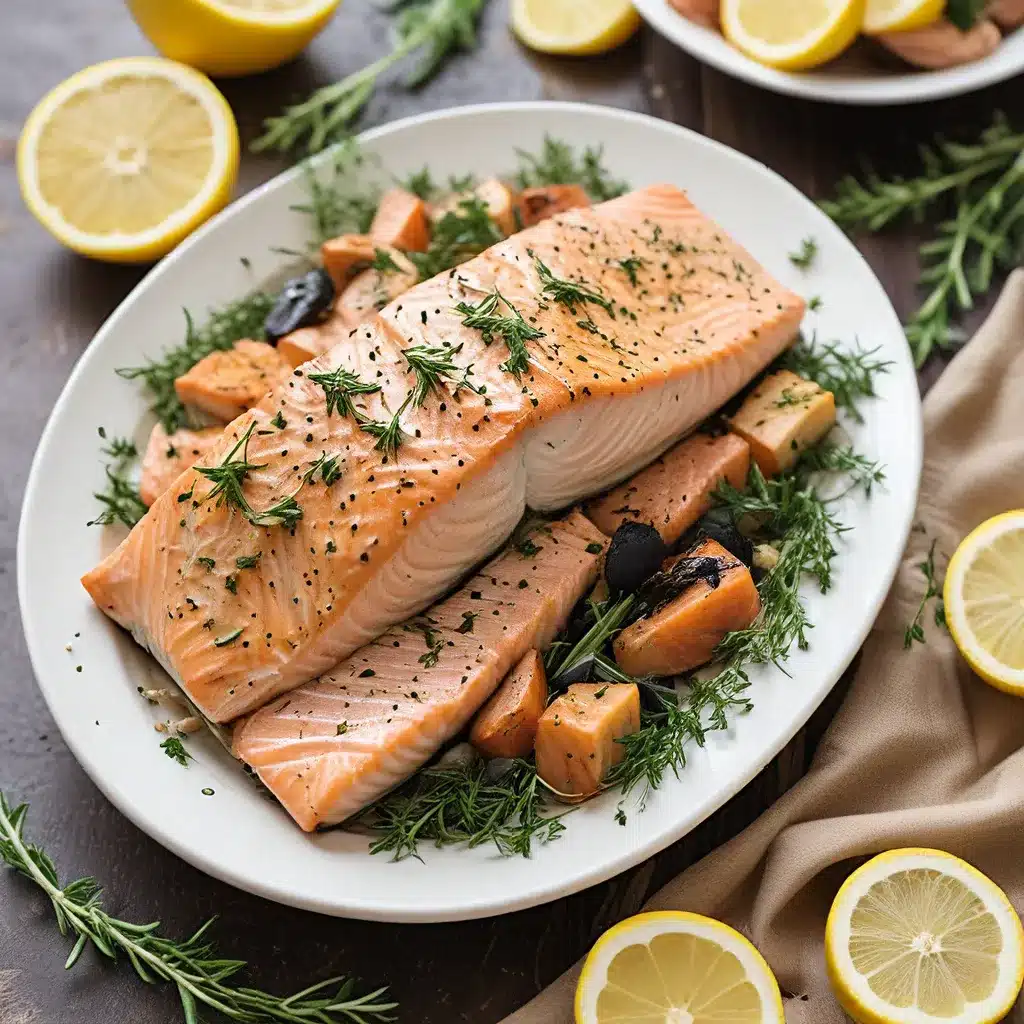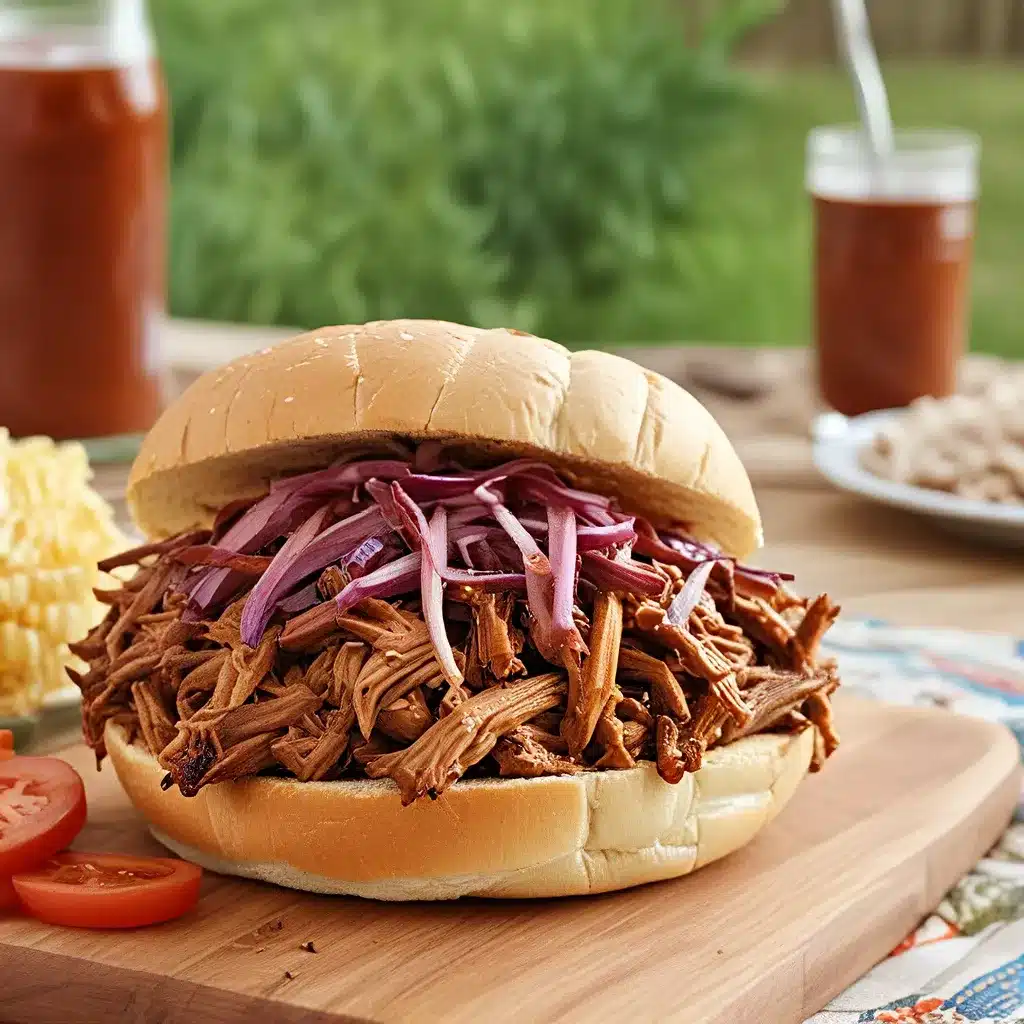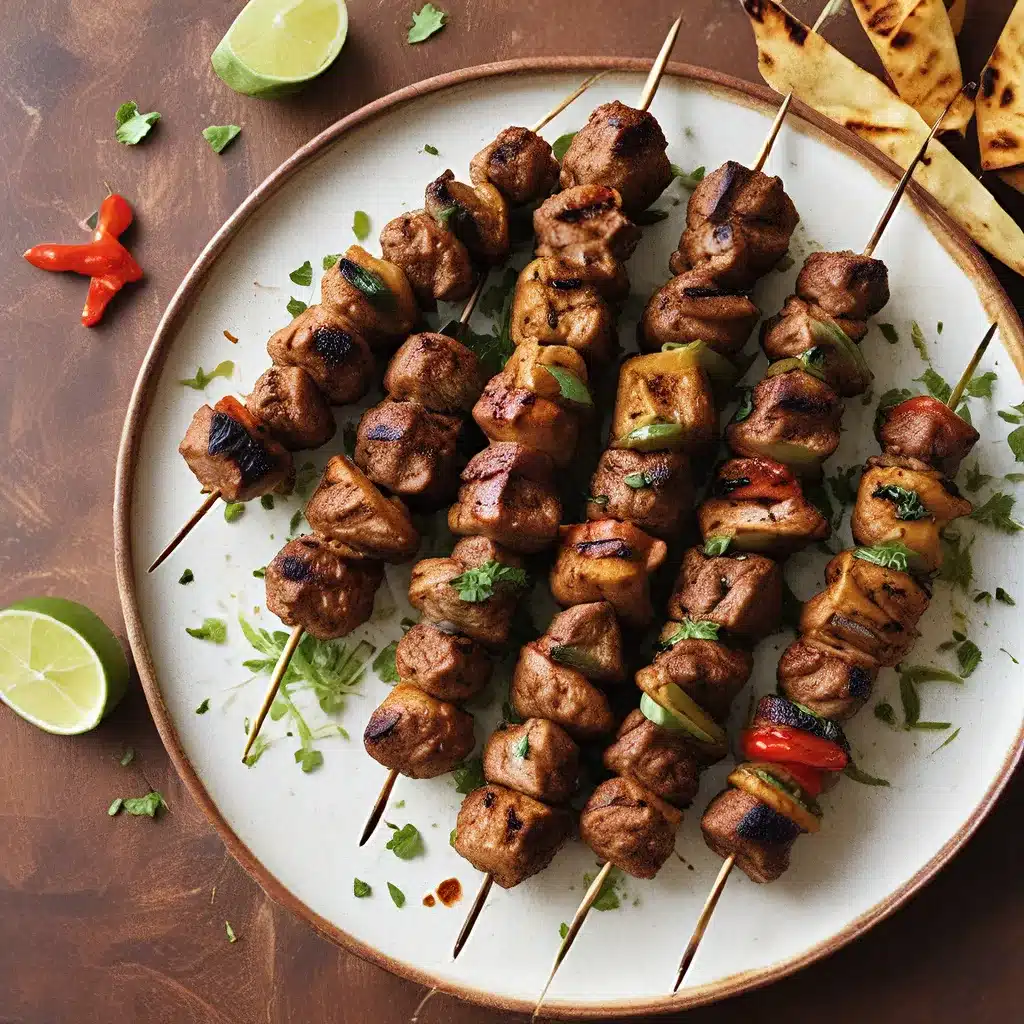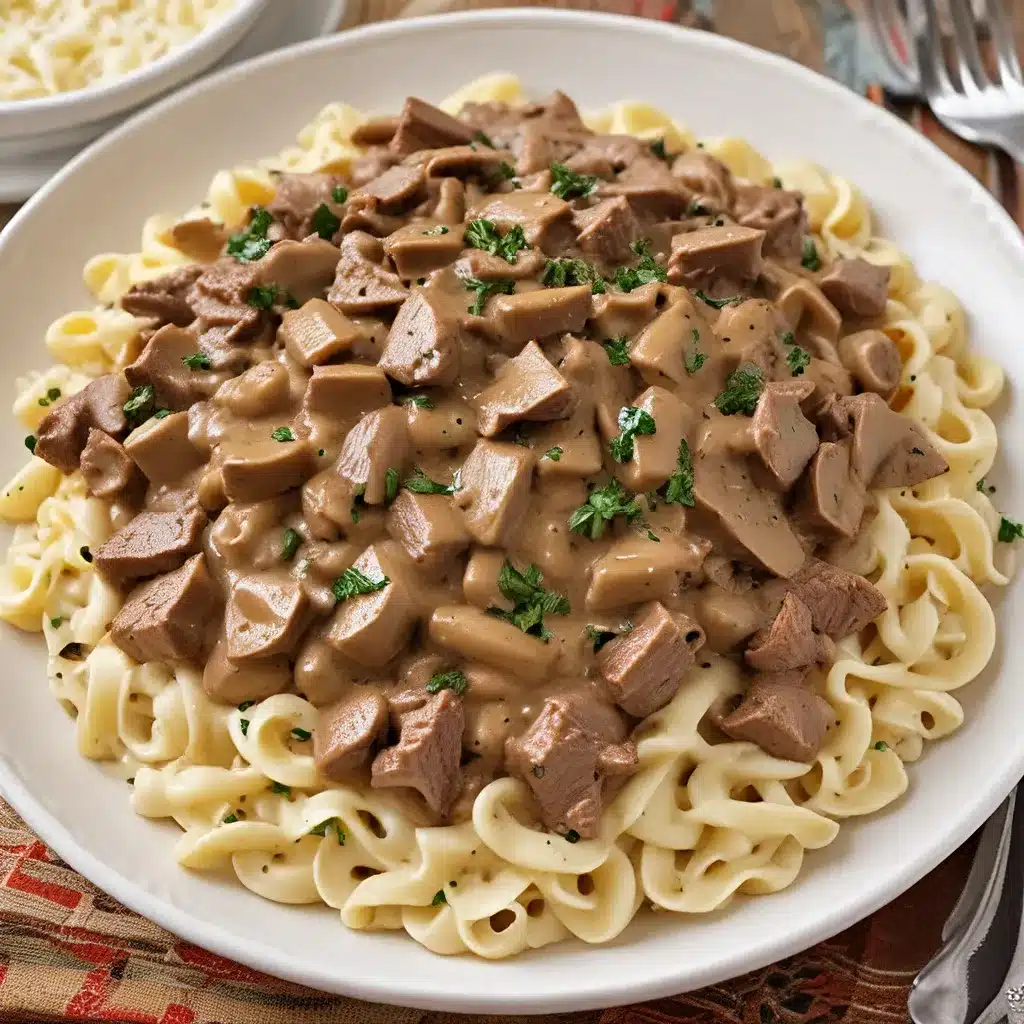
The World’s Most Tempting Treats
Imagine the ultimate dessert. Now ask your friends what their favorite sweet treat is. I bet their answer is completely different from yours. Desserts are deeply personal – they evoke memories of childhood, grandparents’ recipes, and favorite indulgences. Yet some sweets have transcended local borders to become global sensations.
Head to any corner of the world, and you’ll find beloved regional treats that have made their mark internationally. The sugary, creamy dan tats of Hong Kong are as coveted as the rich, nutty baklava of the Middle East. And while these sweets may have originated far from our own backyards, their flavors can often be traced back to the spice trade, colonization, and other threads of culinary history.
As a former pastry chef who’s traveled the globe in search of new flavors, I’ve had the pleasure of sampling mouthwatering desserts from every continent. From the warm, caramelized goodness of Latin America’s dulce de leche cookies to the light-as-air charm of Japanese cheesecake, these are some of the most tempting treats the world has to offer. So get ready to satisfy your sweet tooth with a global tour of the best desserts on the planet.
Dulce de Leche Cookies
Step into a neighborhood bakery anywhere from Argentina to Peru, and you’re likely to find piles of these crumbly, caramel-filled cookies. The classic recipe is simplicity itself – a tender shortbread dough gives way to a sweet layer of dulce de leche, the rich caramel made by gently cooking sweetened milk.
But creative cooks across Latin America have taken this humble cookie to new heights. You’ll find versions dipped in dark chocolate, coated in creamy white chocolate, rolled in coconut, or spiced up with warm notes of cinnamon or vanilla. While the toppings may change, the appeal of that buttery, melt-in-your-mouth cookie remains constant.
These dulce de leche delights are the ultimate in comfort food. Whether you go for a classic or an innovative twist, each bite delivers a taste of homey nostalgia combined with pure indulgence. No wonder they’re a beloved staple from one end of South America to the other.
Strudel
For a master class in the architectural wonders of gluten, look no further than the traditional strudel. This iconic Viennese pastry starts with an impossibly thin, elastic dough that’s gently stretched – not rolled – until it’s nearly transparent. According to legend, the perfect strudel should be so delicate that you can read a newspaper through it.
Once the dough is prepped, it’s wrapped around a sweet filling, usually of tart apples enriched with buttery fried breadcrumbs, raisins, and walnuts. The result is layer upon layer of flaky, golden pastry giving way to a luscious, fruit-studded center. While you can find strudel in bakeries around the world, the classic Viennese experience is truly unbeatable.
As I discovered during my travels, strudel-making is a true labor of love. It takes skill and patience to coax that papery dough into shape without tearing. But the reward is a dessert that’s nothing short of pastry perfection – a study in contrasts, with each bite melting into the next. Whether you enjoy it dusted with powdered sugar or a dollop of whipped cream, strudel is the stuff that dreams (and culinary legends) are made of.
Baklava
Dozens of delicate, flaky layers melt into a single syrupy bite in this iconic treat from the Ottoman Empire. While baklava remains a beloved specialty across the Levant, Balkans, Caucasus, and North Africa – the regions once ruled from Constantinople – its spiritual home is in modern-day Turkey.
In Turkish pastry shops, you’ll find enormous trays of baklava sliced into elegant diamonds, their golden surfaces glistening with honeyed syrup. But this is just the most famous of the empire’s many syrup-soaked pastries. With a simple list of ingredients (phyllo dough, nuts, and honey or sugar) and endless creative potential, baklava easily ranks among the world’s most tempting sweets.
As I discovered during my travels, there’s an art to crafting the perfect baklava. The dough must be stretched tissue-thin, the nuts must be finely chopped, and the syrup must be infused with just the right balance of warm spices. Get all those elements in harmony, and you’ve got a dessert that’s nothing short of sublime – crisp, flaky, nutty, and gooey all at once.
Whether you sample traditional baklava in Istanbul or an innovative twist on the classic in a modern bakery, one thing is certain: this is a treat that has stood the test of time, and for good reason. Every bite is a sweet, syrupy journey through centuries of culinary history.
Black Forest Cake
Along with fairy tales and mountain-top castles, Germany’s Black Forest region is known for its most luscious creation: the Black Forest cake. This decadent dessert starts with dark, moist rounds of chocolate cake, soaked in a cherry-infused syrup spiked with kirschwasser (a sour cherry brandy).
Those chocolate layers are then stacked with generous dollops of whipped cream and fresh cherries, creating a towering confection that’s the stuff of pastry dreams. But the real showstopper is the exterior – the entire cake is enveloped in even more freshly whipped cream, dusted with shaved chocolate, and decorated with more plump, juicy cherries.
As I can attest from personal experience, the result is a frothy, flavor-packed delight that’s the star of pastry cases across Germany. The combination of rich chocolate, boozy cherry, and creamy, airy texture is simply unbeatable. It’s no wonder the Black Forest cake has become such an iconic part of the country’s culinary heritage.
Whether you enjoy a slice in a cozy Bavarian cafe or recreate the recipe at home, this classic dessert is a true feast for the senses. From the first glimpse of its towering silhouette to the final indulgent bite, the Black Forest cake is a masterpiece of flavor and texture that will transport you straight to the heart of Germany’s picturesque countryside.
Borma
While baklava may be the most famous of the Ottoman Empire’s syrup-soaked pastries, it’s not the only one worth celebrating. Borma, a close relative of baklava, is an equally tempting treat that’s found throughout the Middle East and Turkey.
Like its cousin, borma features a filling of ground nuts – often pistachios, pine nuts, or walnuts – enveloped in delicate layers of dough. But there’s one key difference: instead of being baked in flat sheets, borma is rolled and sliced, revealing a stunning cross-section of the colorful nut filling.
This eye-catching presentation is part of borma’s allure. The crisp, golden dough wraps seductively around the rich, fragrant nut center, creating a pastry that’s as beautiful as it is delicious. And unlike baklava’s modest exterior, borma revels in its elaborate appearance, making it a popular choice for special occasions and gifts.
But borma isn’t just a feast for the eyes – it’s a feast for the senses, too. The dough is often fried, adding an extra layer of flavor and a satisfying crunch. And the whole confection is bathed in a syrupy glaze infused with rose water or orange blossom, creating a heady aroma that’s impossible to resist.
As I discovered during my travels, no two borma are exactly alike. Each bakery and home cook seems to have their own signature spin on the classic recipe, whether it’s a unique nut blend or a special touch with the syrup. But one thing remains constant: borma is a dessert that demands to be savored, bite by mesmerizing bite.
Brownies
Fudgy or cakey? Corner piece or slice from the middle? When it comes to brownies, everyone has a strong opinion. This beloved American treat has been the subject of passionate debate for over a century.
One of the earliest recorded brownie recipes appeared in Fannie Farmer’s 1906 “Boston Cooking School Cook Book,” featuring the unsweetened chocolate that gives brownies their signature fudgy texture. In the more than 100 years since, these decadent squares have become a true mainstay of the dessert world – the base for sundaes, the star of ice cream flavors, and a seriously addictive treat in their own right.
Even Hollywood legend Katharine Hepburn had opinions on the perfect brownie, once dispensing this advice: “Never quit, be yourself, and don’t put too much flour in your brownies.” Wise words from a woman who clearly knew a thing or two about indulgence.
As for my own take on the brownie debate? I’m firmly in the fudgy camp, with a preference for the rich, gooey middle slices. But whether you like them cakey or dense, corner or center, one thing is certain: a perfectly baked brownie is a thing of beauty – a balance of chocolate, sugar, and butter that’s hard to beat.
So the next time you’re craving a sweet, indulgent pick-me-up, reach for a brownie. It may be a simple pleasure, but it’s one that’s stood the test of time, and for good reason. After all, as Katharine Hepburn knew, when it comes to this classic American dessert, you really can’t go wrong.
Cannoli
A shattering-crisp shell gives way to a creamy, cheese-filled center in this Sicilian classic, whose roots reach deep into the island’s diverse culinary history. The traditional cannolo (the singular form of cannoli) is filled with a silky-smooth ricotta cheese made from sheep’s milk, a nod to the Arab influences that have long permeated Sicilian cuisine.
The candied citrus that often flavors the creamy interior is another testament to the region’s multicultural heritage. As the story goes, the extravagant Carnival celebrations in Palermo were the original inspiration for this decadent dessert. And it’s easy to see why – with its eye-catching presentation and irresistible combination of textures and flavors, the cannolo is the perfect sweet indulgence for a festive occasion.
Today, you can find cannoli filling everything from pastry cases in Sicilian bakeries to the menus of high-end restaurants around the world. But no matter where you sample this iconic treat, there’s something undeniably transportive about that first bite. The crunch of the shell, the richness of the cheese, the pop of citrus – it’s a symphony of flavors that takes you straight to the heart of Sicily.
Whether you enjoy a classic cannolo or an innovative twist on the recipe, this is a dessert that’s sure to delight. It’s a delicious reminder that sometimes, the simplest pleasures are the most sublime. And for me, there’s no sweeter way to explore the vibrant culinary tapestry of Sicily.
Cardamom Buns
While cinnamon buns may be the darling of Swedish fika (the twice-daily coffee break that’s as much about socializing as it is about treats), many bun aficionados insist that the cardamom version is the true star. These aromatic, yeasted rounds are part of the vetebullar family, a collection of wheat buns that are a cherished part of Swedish cuisine.
In a classic cardamom bun recipe, crushed cardamom seeds are folded into a lightly enriched dough, which is then rolled up with a generous layer of sugar and spice. The result is a pastry that’s simultaneously comforting and complex, with the warm, fragrant cardamom providing a delightful counterpoint to the sweet, pillowy interior.
For the perfect fika experience, I recommend pairing these cardamom buns with a strong cup of coffee and a good friend. After all, as author Johanna Kindvall notes, the iconic Swedish coffee break is as much about conversation as it is about the treats themselves. So take your time, savor every bite, and let the aromatic flavors transport you to a cozy corner of Scandinavia.
Whether you’re enjoying them in a bustling Stockholm cafe or baking a batch at home, cardamom buns are a true pleasure. They’re a delicious reminder that sometimes, the simplest pleasures are the most satisfying. And with Cinnamon Bun Day on the Swedish calendar, there’s no better time to indulge in this beloved national treat.
Chendol
On sweltering afternoons in Singapore, locals cool off with this chilled, silky-sweet concoction, which is a favorite at seaside restaurants and street food stalls. Iced coconut milk is sweetened with a palm sugar syrup, lending it a lightly smoky, caramelized flavor.
The rich, creamy liquid serves as a lush base for tender threads of green rice-flour jelly, which get their vivid color from pandan juice extracted from the tropical screw pine. And for an extra pop of flavor and texture, many versions of this refreshing dessert also include a scoop of sweetened red beans.
While variations of this blissfully cool treat can be found throughout Southeast Asia, Singapore’s take on the classic remains especially tempting. There’s just something about that perfect balance of coconut, palm sugar, and vibrant pandan that makes chendol the ultimate warm-weather indulgence.
As I discovered during my travels, sipping a bowl of chendol is a transportive experience. The flavors evoke the lush, tropical atmosphere of Singapore, while the icy, slippery texture is utterly refreshing. It’s the kind of dessert that makes you want to kick back, relax, and let the stresses of the day melt away.
Whether you enjoy chendol seaside or in the comfort of your own home, one thing is certain: this is a sweet that’s sure to delight. It’s a delicious reminder that sometimes, the most satisfying desserts are the ones that quench your thirst and soothe your soul – no matter where in the world you happen to be.
Chocolate Chip Cookies
The quintessential American treat, the chocolate chip cookie is deceptively simple. At its core, it’s just a basic creamed-butter cookie recipe. But in the hands of skilled bakers, this classic can take on endless subtle variations, producing dramatically different results.
Whatever your favorite version may be, the perfect chocolate chip cookie strikes a delicate balance of textures and flavors. A crispy, golden rim gives way to a tender, melting center, while the buttery sweetness of the dough is punctuated by the slight bitterness of bittersweet chocolate and brown sugar.
Legend has it that the chocolate chip cookie was the result of a happy accident. According to the story, Massachusetts inn owner Ruth Wakefield was trying to make uniformly chocolatey cookies when she stirred chopped chocolate into her dough. Her brand-new recipe was soon published in a Boston newspaper, and the rest, as they say, is pastry history.
As a former pastry chef, I can attest to the enduring appeal of this beloved American treat. There’s something deeply satisfying about that first bite, when the contrasting textures and flavors meld together in perfect harmony. Whether you’re enjoying a warm, just-baked cookie or a chilled, gooey-centered version, it’s a dessert that never fails to delight.
So the next time you’re craving a sweet, indulgent pick-me-up, reach for a chocolate chip cookie. It may be a simple pleasure, but it’s one that’s stood the test of time, and for good reason. After all, as the story goes, sometimes the best things in life really do happen by accident.
Chocolate Mousse
An airy, lush confection made with just a handful of ingredients, chocolate mousse is a delicious paradox: the richer it is, the lighter it seems. Gallic chefs have been whipping up this velvety dessert – the word “mousse” means “foam” in French – for at least a few hundred years, but the quest for frothy chocolate goes back much further.
Among the Olmec, Maya, and Aztec peoples who consumed chocolate long before Europeans arrived, a thick layer of foam was considered the height of good taste. Ancient codices even depict cooks pouring chocolate from several feet in the air to create the perfect frothy texture.
Today, chocolate mousse remains a beloved classic in the French pastry canon, with skilled chefs using everything from blow torches to traditional salamanders (cast-iron disks heated to blazing temperatures) to achieve that signature burn-the-sugar finish. The result is a dessert that’s both decadent and delicate, blending the richness of chocolate with the airy lightness of whipped cream.
As I can attest from personal experience, there’s an almost magical quality to a perfectly executed chocolate mousse. Each spoonful is a study in contrasts – the velvety, almost frothy texture gives way to an intense burst of chocolate flavor. It’s a dessert that’s as visually stunning as it is delicious, making it the perfect way to end any meal.
Whether you enjoy a classic version or an innovative spin on the recipe, one thing is certain: chocolate mousse is a timeless treat that never fails to delight. It’s a delicious reminder that sometimes, the simplest pleasures are the most sublime. And for me, there







